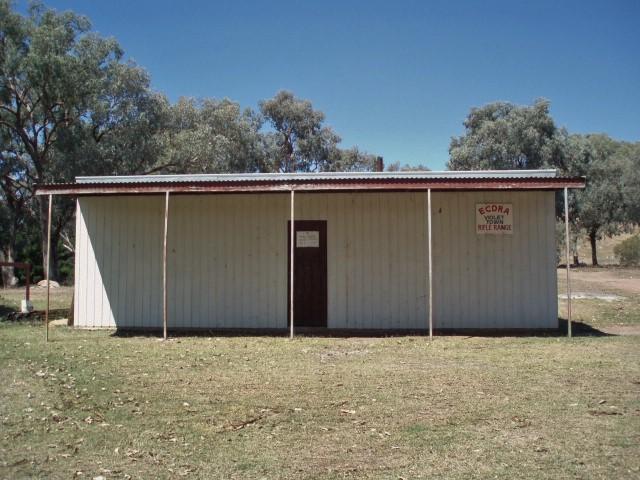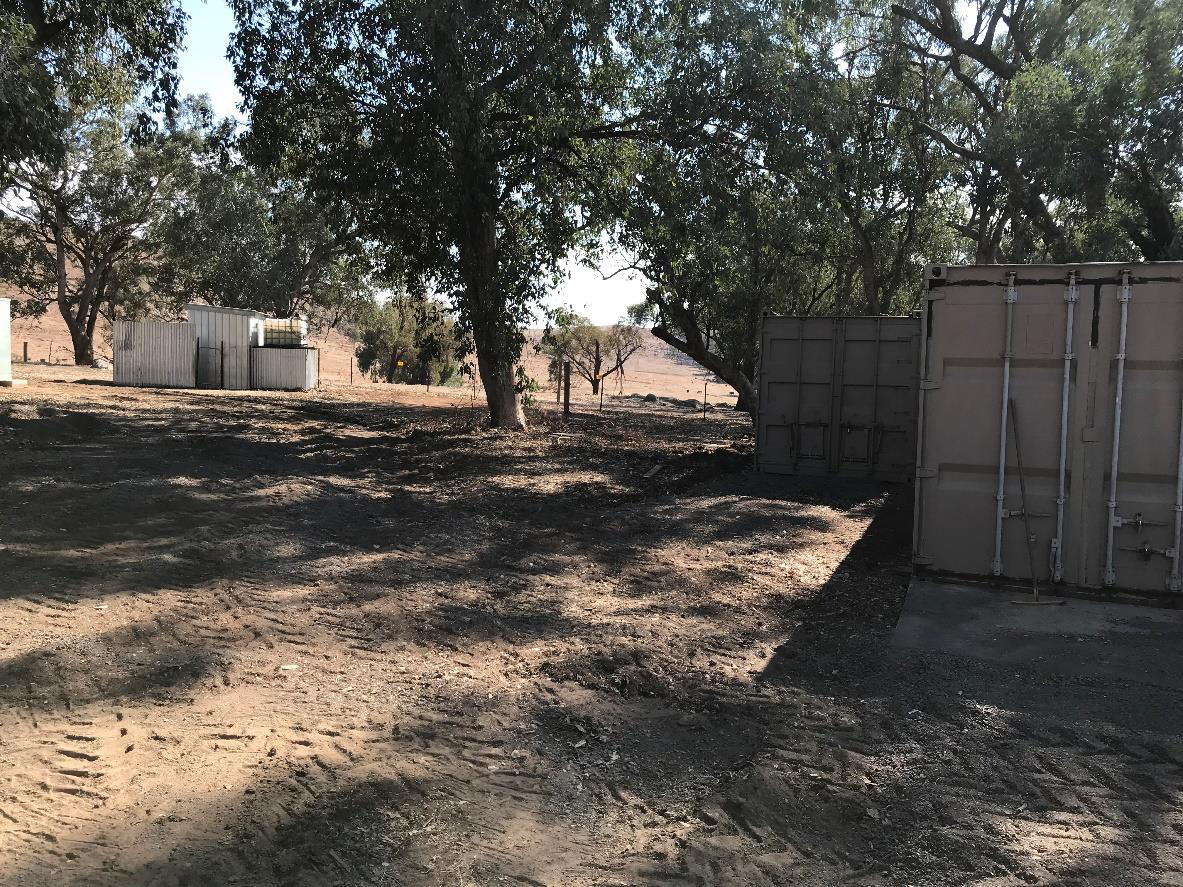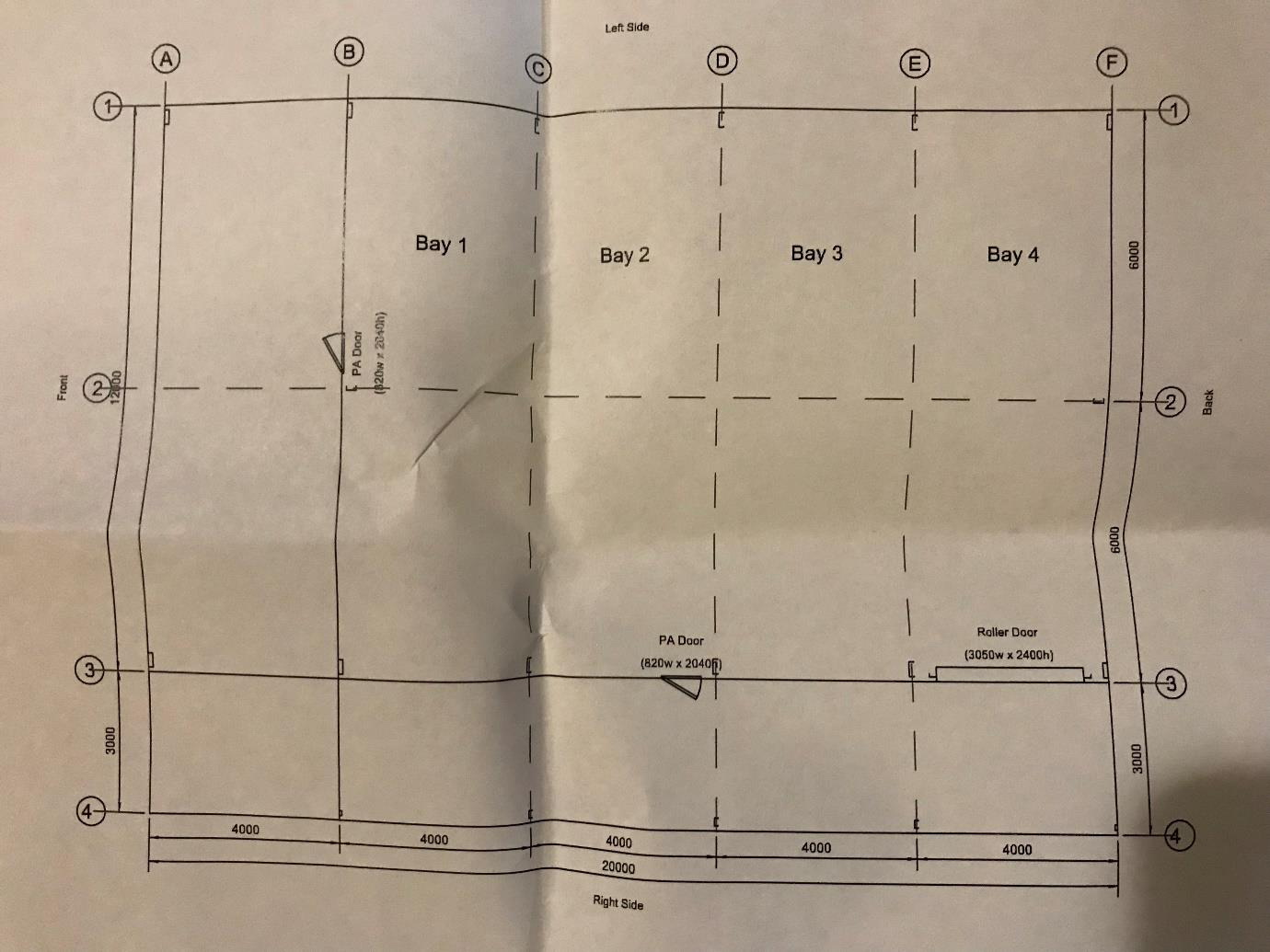ECDRA RIFLE RANGE and Violet Town Shooting Complex Goals

Background
In 2015 the ECDRA was cash poor, with a strong (albeit ageing) pensioner membership. The membership profile meant that we were a strong shooting team, but desperately short of cash, able-bodied workers, and a forward-thinking mindset. The early steps to improve the facilities like the lining and insulation of the old club-house, the sun-shade in front, and the purchase and manufacture of the chronograph, were one, two, three or maybe four man individual projects both in money and physical effort.
ECDRA is anachronistic in that it is a VRA Association (like the GVDRA) with subordinate clubs, but in the particular case attrition has reduced the clubs to memberships of one or two with the clubs having no approved rifle range. In a sense ECDRA can be viewed as a club, even though it is not so in legal definition.
It was long recognised that it was imperative to improve basic facilities at Violet Town that were, simply put, of 3rd world standard. One of our senior members, the late Ian Williams of Euroa Rifle Club (ERC), ERC being a subordinate club of the ECDRA, released several thousand dollars of ERC funds that allowed us to build two important things:
Flushing toilets and running water, and,
100 yds zero, small bore and testing range forward of the 500 yds mound.
Concurrent with this activity, two important developments transpired, championed by our current President Rob Chaffe:
Government introduced a “generational” round of grants to the shooting sports, fortuitously coinciding with the development of Electronic Target Systems (ETS). ECDRA “dug deep” to obtain 2 lanes of the Hexta system, and most of the GVDRA plus Wangaratta RC introduced this ETS as well because of ECDRA’s leadership by Rob Chaffe and myself. The last club to do so was Katandra RC.
The Euroa Clay Target Club (ECTC), having lost their range and all its facilities (including club-house) due to urban encroachment, was successfully relocated to the Violet Town site on formal sub-lease to share the maintenance of the range. Their own funding via the grants broadened the backbone of the infrastructure at Violet Town.
The ETS was widely applauded, but was not without its problems. There were three very significant issues which prevented full benefit being realised. The problems were:
Few members had the basic computer literacy to operate the system (a function obviously of the age profile of the members). This problem essentially resolved itself as the age profile of the membership changed to include younger or professional persons.
No facilities existed for on-site charging of the computers, and even once facilities were established in the shipping container, the container in summer was too hot to charge these items without damage. The interim solution was to transport these items for a member’s residence shoot by shoot or suspend summer full-bore shooting, and the long term solution yet to be realised is more environmentally friendly facilities.
Lastly, the 2 lane ETS struggled to provide the throughput of shooters in the same way that a new freeway attracts traffic and ends up slower than the single carriageway it replaced. ECDRA Life Member Geoff James made a personal cash donation of $10,000 to purchase the 3rd lane of the ETS in 2017, which now enables efficient 3 range 30 person shoots to take place.
In 2017, a senior club-member Ian Williams passed away, leaving the ERC with only one member, and after some administrative delays related to how the funds were invested, the funds were released to ECDRA for redevelopment of the Violet Town range. The ECDRA Committee resolved to use this $140,000 windfall to leverage an application for a further tranche of the shooting sports grants to bring Violet Town rifle range facilities up to contemporary expectations. This application was successful and $100,000 was offered and accepted subject to at least $50,000 cash contribution by ECDRA.
Aspirational goals
Aspirational goals are what ECDRA wants.
The project and the associated grant was framed on being consistent with a number of Government and societal objectives, in order to achieve likelihood of success, including:
Achieving equality of access for women, children and disabled persons etc. etc.
Enhancing the quality of life of older persons through participative sports.
Maintaining public safety.
Managing public lands with environmental sensitivity (which essentially means; plant natives, avoid tree removal and avoid erosion).
Of course, framing an application for bureaucratic approval and satisfying “club” needs can be different things, but we must achieve both. The ECDRA Committee had the following specific objectives as far as infrastructure at Violet Town rifle range was concerned (in no particular priority order):
Build a nice club-house that met real needs and contemporary expectations.
Create a shaded and dry work-space to maintain the ETS targets and other items.
Create a means to charge ETS items on site, in all seasons (noting that the Violet Town butts have flooded on more than one occasion, damaged targets, and present a formidable construction challenge to improve materially).
Renovate or renew the toilets to meet contemporary expectations which includes disabled (wheelchair) access.
Improve the track to 2WD all-weather standard, and protect it from flood damage and erosion.
Create safe parking areas so that 2WD vehicles may park safely (without damage by protruding rocks), and disabled persons may access all facilities from their vehicle (recognising of course that the 600 yds mound presents an almost insurmountable challenge).
Control fall hazards in the butts.
Control fall hazards at the 600 yds mound.
Create a rain and shade cover (carport) over the 600 yds mound.
Re-form of the shooting mounds to meet the highest expectations.
Financial constraints
The ECDRA Committee decided that for full-bore shooting, use of the ETS was an expectation rather than a bonus. Given that any form of insurance would be prohibitively expensive, it was essential that ECDRA quarantine funds to the extent that a catastrophic loss of the ETS due to fire/flood/theft could be overcome. Such a failure without insurance would probably destroy the club.
The consequence of this decision was that the redevelopment budget is only; the $100,000 of the grant, plus about $75,000 of ECDRA funds, plus about $5,000 of ECTC funds, plus any “in kind” support ECDRA and ECTC members can muster
Planning approval
The Violet Town rifle range is a Crown Land Recreational Lease, and as a consequence the Planning Approval process performed by the Shire has a precursor land owner/manager approval (DELWP) which also includes, now, indigenous heritage “clearance”.
These agencies have been told that the scope of works for their consideration is:
Construction of a large shed.
Some earthworks for environmental improvement and safety.
Relocation of a number of shipping containers.
DELWP
Our project required some documents to be prepared some management plans to assure the Government agencies that ECDRA was a good tenant on the Crown Land. Presumably at some point DELWP will make a 2nd visit to assure themselves that no trees have been removed and some indigenous grasses have revegetated disturbed areas.
Building approval and certification
After Planning Approval all permanent buildings must be certified as compliant with the Building Code of Australia (BCA). For homes this is colloquially referred to the terms Building Permit (intent) and the Certificate of Occupancy (compliance).
The contemporary process is that an independent certifier is engaged for this purpose.
The Building Permit will cover the construction of a basic, large shed.
There are a number of very good reasons to craft the scope of works “for certification” and these are:
It is unrealistic to fit any means of heating or cooling in “the shed” because doing so invokes “energy efficiency” requirements of the BCA, which in turn may escalate compliance costs (extra insulation or carbon renewable energy sources) and certification costs (doing the energy efficiency calculations).
It is unrealistic to line the shed because, whilst a triviality, the submission of a new set of structural calculations would be required with an attendant cost and delay.
It is unrealistic to construct an internal disabled toilet within the shed structure because that would comprise a new load on the existing septic layout, in turn invoking full compliance with contemporary standards with attendant delays, construction cost and evaluation cost (including soil testing).
Progress
Grant moneys
We have received approval to receive the first payment of $70,000. This should be in the bank shortly, subject to the usual Government delays.
Container moves

The containers are now all together in a “park” near the toilets.
The ECDRA container (on the left) is nicely shaded by the ECTC 40’ one.
It would be useful if members with appropriate skills could reconnect the solar charging system for the current season.
Shed construction
We have contracted with Steeline (Shepparton) to supply and erect. A deposit has been paid. This includes the main slab, and the concrete paving of the verandah areas, so it is full “hands off” by members. Construction is expected to commence on or about 6 May 2019. The indicative cost is approximately $75,000 subject to some assumptions being valid.
The shed will be located approximately 5 m from our western boundary, to the South of the toilets. New member Glenn Chisholm is a professional surveyor, and has kindly offered to prepare a site plan and certified survey which will be a precondition of the Building Permit.

The shed will have “Paperbark” walls and a “Mangrove” roof, with “Mangrove” gutters.

